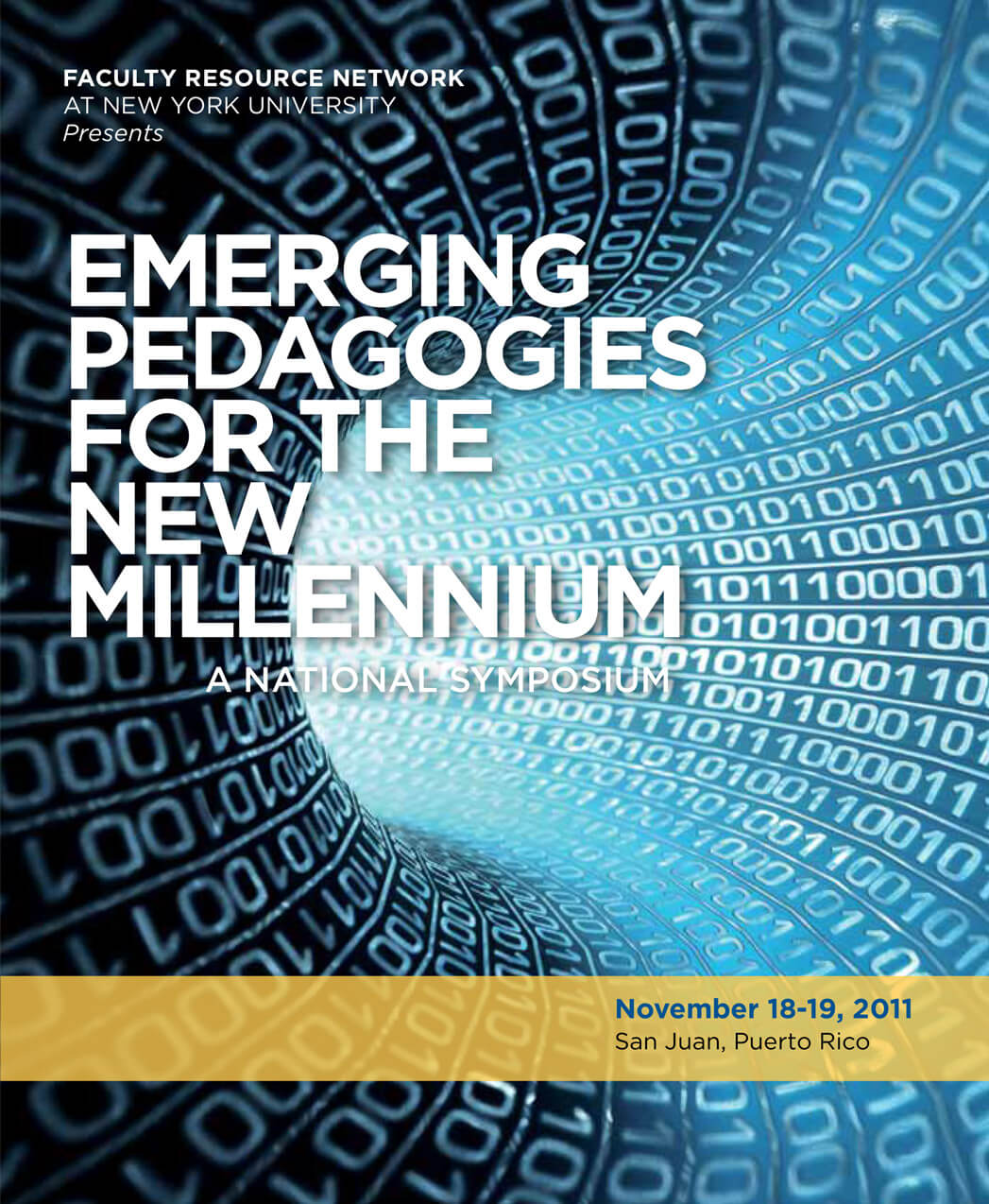University of Puerto Rico, Rio Piedras and University of the Sacred Heart
San Juan, Puerto Rico
Symposium Overview
We are experiencing a major transformation in teaching and learning, which will have far-reaching impacts on students, faculty, and educational institutions. This change arises from the convergence of several factors that are rede ning higher education in the 21st century. For the current generation of students—often called the millennials—information has been always instantly accessible via the internet. And nowadays, it can be beamed directly to the palms of their hands. How does this freeflow (and … Show more
We are experiencing a major transformation in teaching and learning, which will have far-reaching impacts on students, faculty, and educational institutions. This change arises from the convergence of several factors that are rede ning higher education in the 21st century.
For the current generation of students—often called the millennials—information has been always instantly accessible via the internet. And nowadays, it can be beamed directly to the palms of their hands. How does this freeflow (and often overflow) of information impact how faculty teach and how students learn? If professors are no longer the sole conduit of knowledge, does this require a change in the goals and practice of education?
The availability of new technologies also expands the repertoire of instructional tools that faculty can utilize in their courses. Until recently, almost all teaching and learning happened within the four walls of a classroom at a scheduled time and location. Today, students and faculty can interact via blogs, chat-rooms, games, or even disguised as avatars in a “second life” simulation. An increasing number of courses are being taught mostly or completely online, where discussion occurs electronically rather than in person. However, the rapid pace of technological innovation has often created a digital culture divide on our campuses, with faculty on one side and students on the other. How can faculty learn and implement new instructional technologies to enhance student learning?
Extensive research in cognitive science has provided unprecedented insights into how people learn. Many studies show that education is most effective when students are active participants in their own learning rather than passive recipients of information. These insights have been embedded into new types of collaborative pedagogies, such as peer-led team learning, case-based learning, and role-playing games. Faculty members who adopt these pedagogies are required to relinquish their usual position as the central focus in the classroom, and adopt a different role as a facilitator to student exploration. Do these student-centered classroom activities change how students view, approach, and succeed in their own learning? Ultimately, how will these new practices transform the face of teaching and learning in the years to come?
In November 2011 faculty members and other representatives of Faculty Resource Network institutions addressed these questions and issues during a national symposium on “Emerging Pedagogies for the New Millennium,” hosted by The University of Puerto Rico, Rio Piedras and the University of the Sacred Heart in San Juan, Puerto Rico.

Spring 2012 Journal
Keynotes
Keynotes
José Jaime Rivera, President, Universidad del Sagrado Corazón (University of the Sacred Heart), Puerto Rico
Presentations
Presentations
Joseph Zeppetello, Marist College
Rosa A. Ojeda-Ayala, University of the Sacred Heart
Millie Burns, Marymount Manhattan College
Rebecca Mushtare, Marymount Manhattan College
Erin O’Connor, Marymount Manhattan College
Nicola Davis Bivens, Johnson C. Smith University
Anita Bledsoe-Gardner, Johnson C. Smith University
Rosalyn D. Harrington, Johnson C. Smith University
Richard Vogel, Farmingdale State College
Clarissa Myrick-Harris, UNCF Institute for Capacity Building
Sylvia Carey-Butler, UNCF Institute for Capacity Building
Linda Curiel, UNCF Institute for Capacity Building
Felicia Davis, UNCF Institute for Capacity Building
Sarbijt “Sab” Singh, Farmingdale State College
Anthony Sovak, Farmingdale State College
Ann Shapiro, Farmingdale State College
Judy Gordon, The College of New Rochelle
Laura Bagnarol, The College of New Rochelle
Myna German, Delaware State University
Paul Abair, United States Air Force Academy
Xu Zhang, Farmingdale State College
Dorian B. Crosby, Spelman College
Cynthia Neal Spence, Spelman College
Susan Prion, University of San Francisco
Marionette Holmes, Spelman College College
Shani Harris, Spelman College College
Rosalind Gregory-Bass, Spelman College College
Leyte Winfield, Spelman College College
Judith Simons Gold, Marygrove College
Theodora P. Williams, Marygrove College
Ruth Zealand, College of New Rochelle
Dorothy Larkin, College of New Rochelle
Jean Coppola, Pace University
Barbara Appehbohm Thomas, Westchester Community College
Wayne Tanna, Chaminade University
William Costanzo, Westchester Community College
Orla LoPiccolo, Farmingdale State College
Jeffrey Gaab, Farmingdale State College
Beverly Kahn, Farmingdale State College
Pia Deas, Lincoln University
Pamela Waldron-Moore, Xavier University of Louisiana
Rosalee Martin, Huston-Tillotson University
Saadia N. Lawton, Lincoln University
Alice E. Stephens, Clark Atlanta University
Marie Pullan, Farmingdale State College
Brahmadeo Dewprashad, Borough of Manhattan Community College
Wesley Pitts, Lehman College
Gillian Bayne, Lehman College
Mathew Mitchell, University of San Francisco
George Fernandez, Farmingdale State College
Laurie Rozakis, Farmingdale State College

